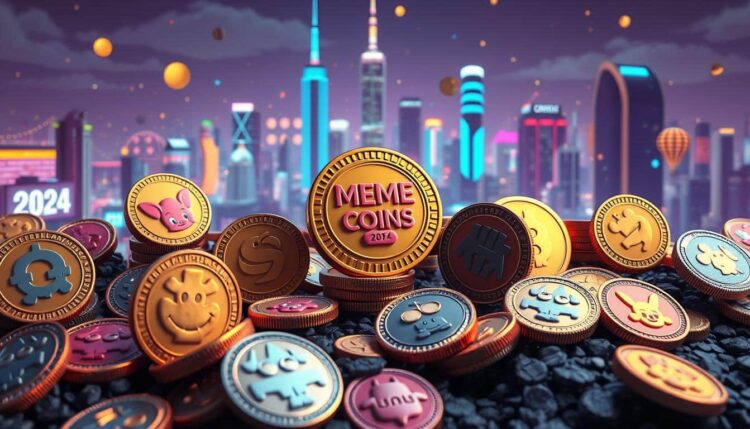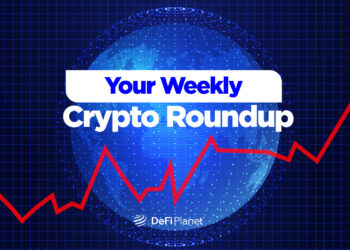Memecoins have carved out a distinct niche in the cryptocurrency world, combining internet humour with investment potential. From Dogecoin’s beginnings as a playful parody to the rise of Shiba Inu and other culturally inspired tokens, memecoins have drawn massive attention, largely due to their viral appeal and affordability.
But given the massive size of their market, we must ask whether these coins genuinely drive broader crypto adoption, or are they merely speculative assets with fleeting popularity?
The Appeal of Memecoins
Memecoins like Dogecoin and Shiba Inu thrive on their ability to capture widespread attention through humour and pop culture. By tapping into internet memes and trends, these coins have become highly shareable on platforms such as Twitter, Reddit, and TikTok, where viral content often leads to increased visibility.
High-profile endorsements, particularly from figures like Elon Musk, have amplified this reach. Musk’s tweets, for instance, have spurred significant price spikes for Dogecoin, making headlines and drawing millions of curious observers into the crypto space.
RELATED: Galaxy Digital CEO Novogratz Champions Memecoins Amid Industry Skepticism
Mainstream media coverage has further cemented the role of memecoins as a cultural phenomenon. Stories of investors turning modest investments into life-changing gains attract both casual observers and those new to cryptocurrency. For instance, Shiba Inu’s petition for listing on Robinhood in 2021 was a notable example of how memecoins push into mainstream financial platforms, sparking discussions beyond typical crypto circles.
Perhaps most importantly, memecoins foster passionate communities. These groups create ecosystems of support and education, guiding newcomers through the process of setting up wallets, making trades, and understanding basic blockchain principles. Dogecoin’s community-driven charitable initiatives, such as raising funds for disaster relief and water projects in Kenya, showcase the potential for memecoins to unite users in achieving meaningful goals.
Accessibility: A Gateway for New Crypto Users
Memecoins often serve as the first step into the cryptocurrency world for many newcomers. Their low cost compared to established coins like Bitcoin or Ethereum makes them an affordable and less intimidating entry point. For example, while a single Bitcoin may be priced in the tens of thousands, memecoins like Shiba Inu or Dogecoin allow investors to buy hundreds or even thousands of tokens for just a few dollars. As of November 7, 2024, Dogecoin had over 7 million individual wallet addresses, and Shiba Inu has attracted over 1.4 million holders.
Additionally, buying memecoins is generally straightforward. Major exchanges such as Binance, Coinbase, and Robinhood list these tokens, making it easy for beginners to purchase them without navigating complex DeFi protocols. The simplicity of the process—combined with the lighthearted, meme-inspired branding—makes memecoins particularly appealing to younger, tech-savvy audiences.
Their integration with internet culture further boosts their accessibility. Memecoins align closely with the habits and humour of the digital generation, bridging the gap between financial tools and social platforms. This cultural resonance draws people into crypto who might otherwise find it too technical or intimidating.
RELATED: VanEck’s Pranav Kanade Sees Memecoins’ Successes as a Blueprint for Crypto and Web3 Growth
The Challenges Memecoins Face in Driving True Adoption
Despite their accessibility and viral appeal, memecoins face significant obstacles in proving their long-term value. One of the most pressing concerns is their extreme volatility. Prices often surge or crash based on little more than social media sentiment. For instance, Shiba Inu’s meteoric rise in 2021 made early adopters millions but also led to dramatic price drops that wiped out latecomers’ investments. This instability can deter cautious investors and undermine trust in cryptocurrencies as a whole.
A lack of real-world utility further hinders the potential of memecoins to contribute to meaningful crypto adoption. Unlike Bitcoin, which positions itself as a decentralized currency, or Ethereum, which underpins smart contracts and DeFi, many memecoins lack technological innovation or functional use cases. They remain primarily speculative assets, driven by hype rather than inherent value.
The memecoin space is also plagued by scams and “rug pulls,” where project creators abandon their tokens after raising funds, leaving investors with worthless assets. This problem is exacerbated by the low barrier to entry for launching memecoins. Scammers often manipulate trending lists on platforms like CoinGecko, creating an illusion of popularity before disappearing with investors’ money. (See an X user recounting an experience of these nefarious acts below). Such incidents tarnish the reputation of memecoins and the broader cryptocurrency market, discouraging genuine adoption.
TLDR;@gmgnai @evilcos @Phalcon_xyz @base @peckshield @Bitrace_team @realScamSniffer @0xAA_Science
There are many honeypot ERC20 tokens in the trending list on this https://t.co/1pdCKeJlKn website. Please be cautious, even though it is labeled as “everything is SAFU.” The…— roffett.eth (@roffett_eth) September 25, 2024
Are Memecoins Truly Expanding the Crypto Ecosystem?
Memecoins undoubtedly introduce millions to the world of cryptocurrency. They simplify the onboarding process, provide an engaging entry point, and highlight the power of blockchain technology to create global movements. However, their contribution to long-term adoption is less certain.
While memecoins attract users, their speculative nature often overshadows their role as tools for education or financial inclusion. For every new crypto enthusiast who stays to explore blockchain technology, many others are driven by the allure of quick profits, often leaving after market downturns. This cycle raises concerns about whether memecoins are fostering lasting engagement or merely fueling short-term speculation.
To truly drive adoption, memecoins need to evolve beyond internet jokes. Incorporating tangible use cases, such as integration with decentralized finance (DeFi), gaming, or non-fungible tokens (NFTs), could solidify their place in the crypto ecosystem. For instance, projects like Floki Inu, which combine memecoin appeal with utility through metaverse games and NFTs, represent steps in the right direction.
RELATED: Shiba Inu Team Proposes $2 Billion Blockchain Innovation Hub in U.S.
Our Verdict: Memecoins Have Mixed Impact on Crypto Adoption
Memecoins play a complex role in the cryptocurrency landscape. On the one hand, their viral appeal and affordability introduce millions to the concept of blockchain and digital currencies, making crypto accessible to a wider audience. On the other hand, their volatility, lack of utility, and association with scams limit their potential to foster genuine, sustainable adoption.
The rise of memecoins underscores the importance of community and culture in driving interest in cryptocurrencies. However, to cement their place in the future of digital finance, memecoins must evolve into more than speculative assets. By addressing their weaknesses and building real-world applications, they have the opportunity to not only entertain but also educate and empower a new generation of crypto users. Until then, memecoins remain a double-edged sword: a gateway for some but a dead end for others.
Disclaimer: This article is intended solely for informational purposes and should not be considered trading or investment advice. Nothing herein should be construed as financial, legal, or tax advice. Trading or investing in cryptocurrencies carries a considerable risk of financial loss. Always conduct due diligence.
If you would like to read more market analyses like this, visit DeFi Planet and follow us on Twitter, LinkedIn, Facebook, Instagram, and CoinMarketCap Community.
Take control of your crypto portfolio with MARKETS PRO, DeFi Planet’s suite of analytics tools.”






















